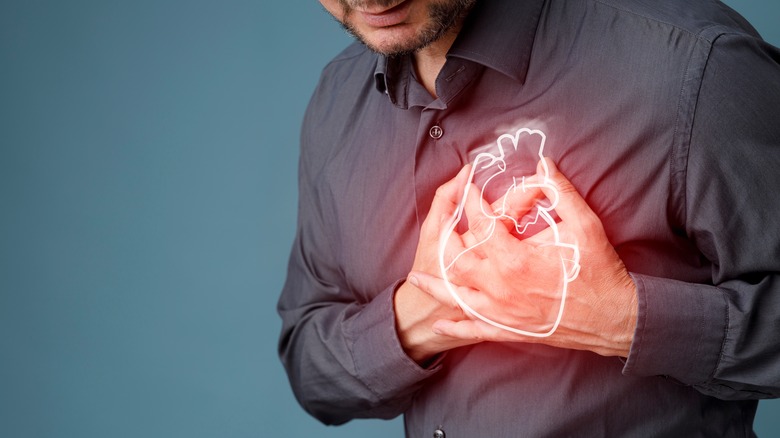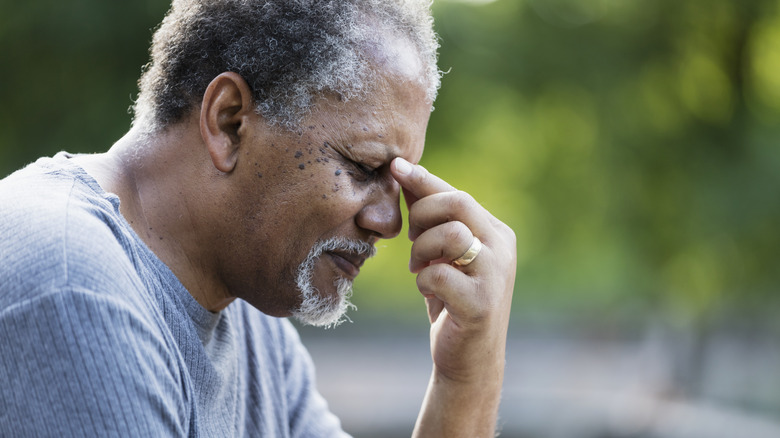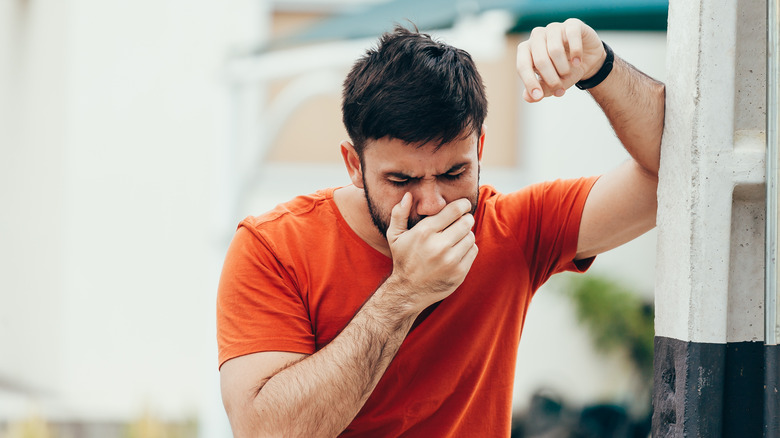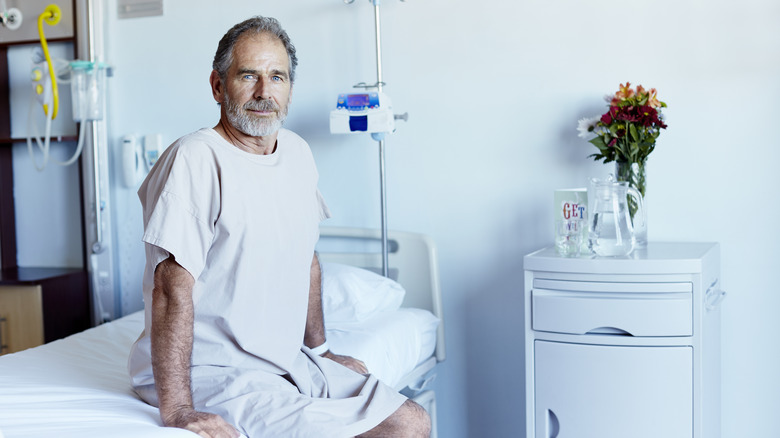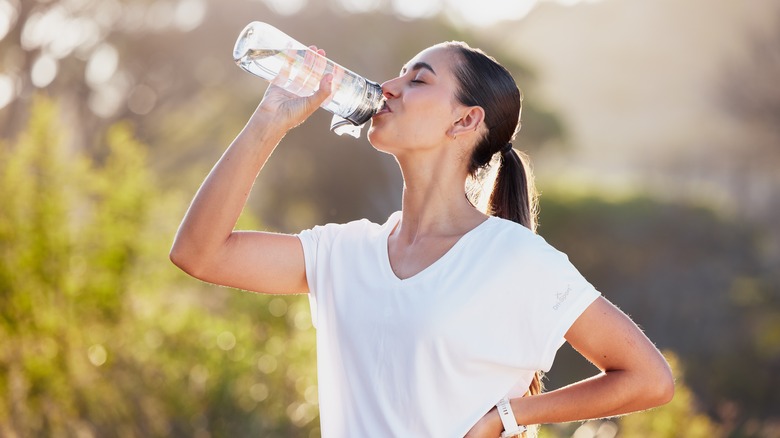What Happens To Your Body When You Get Heatstroke
In a world grappling with the challenges of climate change and increasingly intense heatwaves, the threat of heatstroke becomes a serious concern, especially for those who enjoy spending time outdoors. As temperatures rise globally, it's crucial to understand the effects of excessive heat on our bodies — knowledge that could make a real difference and even save lives.
However, heatstroke can affect individuals regardless of the current hot weather conditions. It can also emerge from the heat generated by muscles during intense physical activity. This heightened vulnerability places outdoor adventurers at an increased risk of developing heatstroke.
Let's delve into what happens to our bodies when our internal temperature skyrockets. We'll explore the signs that signal you are at risk of heatstroke and take a closer look at the potential long-term impacts on the health of those who've endured the tough experience of heatstroke. We'll break down the different elements and strive to understand how it all works so that you're equipped with the knowledge to prevent and navigate heatstroke confidently and wisely.
The onset of heatstroke
Heatstroke, a serious and dangerous condition, happens when a bunch of things go wrong in your body because it gets too hot. It's like a perfect storm of problems. Two main issues kick it off: spending too much time in really hot places and your body struggling to keep its temperature in check.
Normally, when it's hot, your body does things like sweating and sending more blood to your skin to cool down. But if you're in the heat for too long, these tricks might not be enough. Your body can get overwhelmed, and that's when heatstroke can happen. Some common reasons why your body might struggle to handle the heat include not drinking enough water (which leads to dehydration), not being used to hot weather, or having certain health issues (like COPD or MS) that make it harder for your body to stay cool.
So, heatstroke isn't just about feeling really hot — it's your body having a tough time dealing with the heat. Understanding what leads to it can help you take steps to prevent it and stay safe.
General symptoms of heatstroke
When you're too hot, your body can show signs that something's not right. For example, your heart might beat faster than usual because your body is working hard to cool down. You might also feel confused because the heat affects your brain, making it harder to think clearly. Nausea can occur too, showing how your body is under a lot of stress. One big clue that something serious might be happening is when your skin feels really hot and dry instead of sweating like it normally does. Sweating helps your body cool down, so if it's not working right, that's a sign of trouble.
It's important to know the difference between two heat-related problems: heat exhaustion and heatstroke. Heat exhaustion comes first and includes things like sweating a lot, feeling weak, dizzy, and having a fast but weak pulse. It's serious but not as severe as heatstroke. Heatstroke is a big emergency. Along with the signs mentioned earlier, it can also bring on a pounding headache, shallow breathing, and even passing out. If someone has heatstroke, they need urgent medical help to cool down their body.
Understanding these signs and knowing the difference between heat exhaustion and heatstroke is super important. Heat exhaustion can often be managed by taking a break, drinking water, and finding shade. If you see someone showing signs of heatstroke, they need help right away. Being aware of these differences helps everyone take action to stay safe when it's really hot outside.
Can your body cool itself down?
The body employs several natural cooling mechanisms to regulate its internal temperature, particularly in response to elevated environmental heat. Two key processes involved in this are sweating and the dilation, or opening, of blood vessels.
Sweating is a fundamental mechanism by which the body releases heat. When the internal temperature rises, sweat glands release moisture onto the skin's surface. As this sweat evaporates, it absorbs heat from the body, cooling the skin and, subsequently, the entire body. This process is effective in maintaining a stable internal temperature under normal conditions. Simultaneously, blood vessels near the skin's surface widen in response to heat. This dilation, known as vasodilation, allows more blood to flow near the skin, allowing heat transfer to the surface. As the heated blood reaches the skin, heat is radiated away, aiding in the cooling process.
However, during heatstroke, these natural cooling mechanisms can be compromised. Sweating may cease or become insufficient, and blood vessels may lose their ability to effectively dilate. As a result, the body retains excessive heat, leading to a dangerous spike in internal temperature.
How does heatstroke affect the heart?
Heatstroke can have significant and potentially life-threatening effects on the cardiovascular system, disrupting the normal functioning of the heart and blood vessels. The cardiovascular system is particularly vulnerable to the extreme elevations in body temperature associated with heatstroke.
One of the primary responses to heatstroke is an elevation in heart rate. The heart works harder to pump blood to the skin's surface in an attempt to dissipate heat through sweating and vasodilation. This increased workload on the heart, combined with the overall stress on the cardiovascular system, can lead to a rapid and elevated heart rate, known as tachycardia. As a result, heatstroke can disturb the normal electrical impulses that regulate the heart's rhythm. This can result in arrhythmias, which are irregular heartbeats. Arrhythmias may manifest as palpitations, fluttering sensations in the chest, or a racing heart. Severe cases of heatstroke may even lead to more dangerous arrhythmias, contributing to the overall cardiovascular compromise.
Prolonged exposure to extreme heat can have direct effects on cardiac tissues, potentially leading to cardiac damage. The increased demand on the heart, coupled with dehydration and electrolyte imbalances, may contribute to conditions such as myocardial infarction (heart attack) or other forms of cardiac injury.
How does heatstroke affect the brain?
Heatstroke can have profound effects on the brain. As the body's internal temperature rises to dangerous levels during heatstroke, the central nervous system becomes particularly vulnerable to the adverse impact of elevated heat.
Elevated body temperature can disrupt normal cognitive function, leading to confusion. Individuals experiencing heatstroke may struggle to think clearly, make decisions, or communicate effectively. This mental confusion is a hallmark symptom of heatstroke and underscores the severity of the condition. In severe cases of heatstroke, the overheating of the brain can trigger seizures. These uncontrolled, abnormal electrical activities in the brain can manifest as convulsions, loss of consciousness, and involuntary movements. Seizures during heatstroke necessitate immediate medical attention. The impact on the brain during a heatstroke episode may lead to lasting cognitive impairments, affecting memory, concentration, and overall cognitive function. As The Washington Post notes, 10-28 percent of patients who have had heatstroke may be left with this lasting damage.
Can heatstroke negatively affect your liver and kidneys?
As the liver and kidneys are vital organs which are particularly sensitive to changes in body temperature and overall physiological stress, heatstroke can have severe consequences on their function. Heatstroke can lead to a reduction in blood flow to the liver, a condition known as ischemic hepatitis. Reduced blood flow compromises the liver's ability to function, potentially resulting in liver damage. The stress of heatstroke may cause an elevation in liver enzymes, indicating liver inflammation or injury. This can be observed through blood tests measuring enzymes.
Heatstroke poses a significant risk of acute kidney injury, where the kidneys are unable to effectively filter waste products and maintain fluid balance. Dehydration, a common feature of heatstroke, further exacerbates the risk of kidney injury. Heatstroke can disturb the balance of electrolytes in the body, such as sodium and potassium, which are crucial for proper kidney function. Imbalances in electrolytes can contribute to kidney dysfunction.
In severe cases, heatstroke can result in chronic liver or kidney damage, impacting the organs' ability to function over the long term. This damage may contribute to conditions like chronic kidney disease or liver disease, necessitating ongoing medical management.
Does heatstroke affect your digestive system?
Heatstroke can significantly compromise the gastrointestinal (GI) system, leading to a range of symptoms that reflect the body's struggle to cope with extreme heat.
The compromised GI system during heatstroke is often a result of reduced blood flow to the gastrointestinal organs, diverting blood to vital organs such as the heart and brain in an attempt to maintain core body temperature. Additionally, dehydration, a common consequence of heatstroke, can further contribute to GI symptoms.
Elevated body temperatures during heatstroke can disrupt the normal functioning of the stomach and intestines, leading to a sensation of nausea. This may be accompanied by a feeling of discomfort or unease in the upper abdomen. The stress placed on the body during heatstroke, combined with the body's attempt to cool itself, can result in the urge to vomit. Vomiting is a protective mechanism that the body employs to expel potentially harmful substances and reduce the overall physiological burden. Heatstroke can also affect the lower GI tract, leading to increased motility and potentially causing diarrhea. This accelerated movement of stool through the intestines may contribute to fluid and electrolyte imbalances, exacerbating the overall impact of heatstroke.
Living with the long-term consequences of a heatstroke episode
Surviving an episode of heatstroke does not necessarily mean the end of its impact on the body; rather, it may leave lasting effects that could elevate the risk of chronic health issues. Many individuals underestimate these long-term consequences, and understanding the potential aftermath is crucial for comprehensive health management.
As we already know, heatstroke can exert significant stress on vital organs such as the heart, liver, and kidneys. Even after the acute episode subsides, there may be lingering damage to these organs, potentially increasing the risk of chronic conditions. Heatstroke can disrupt the body's ability to regulate temperature effectively. This may leave individuals more susceptible to heat-related illnesses in the future, making it essential for them to take extra precautions in high-temperature environments. Survivors of heatstroke may experience heightened sensitivity to heat, with a lower threshold for developing heat-related symptoms. This increased susceptibility requires ongoing vigilance in managing exposure to high temperatures to prevent recurrence.
Recognizing the potential long-term consequences of heatstroke underscores the importance of post-recovery care. Regular check-ups and monitoring of organ function, particularly the heart, liver, and kidneys, are crucial. Lifestyle adjustments, such as staying well-hydrated and avoiding excessive heat exposure, become imperative for individuals who have experienced heatstroke. By acknowledging and addressing the lasting effects, survivors can actively manage their health and reduce the risk of chronic issues associated with this severe heat-related condition.
Preventing heatstroke while outdoors
Even in extreme climates while performing intense activities, it is entirely possible to avoid heatstroke. Drink plenty of water throughout the day, especially in hot weather or during exercise. Avoid excessive caffeine and alcohol, as they can contribute to dehydration.
Choose lightweight, loose-fitting, and light-colored clothing to reflect sunlight and facilitate better air circulation. Don a wide-brimmed hat and sunglasses for added protection. Apply sunscreen with a high SPF to protect your skin from harmful UV rays. Sunburns reduce the body's ability to cool itself effectively.
Be aware of your body's tolerance to heat and adjust activities accordingly. If engaged in outdoor activities, take regular breaks in a cool or shaded area. Allow your body to rest and recover to prevent overheating. Stay informed about the weather forecast, especially heat advisories. Plan outdoor activities accordingly, rescheduling or adjusting plans if needed. Avoid strenuous physical exertion during the hottest parts of the day and gradually acclimate to warmer temperatures. Whenever possible, stay in shaded areas, especially during peak sunlight hours. This provides relief from direct sun exposure and helps regulate body temperature.
Treating heatstroke while outdoors
If someone is exhibiting signs of heatstroke, such as confusion, rapid heartbeat, or unconsciousness, call emergency services immediately. Heatstroke is a medical emergency that requires prompt intervention.
If safe to do so, move the person to a shaded or air-conditioned area. Loosen or remove excess clothing to promote better heat dissipation. Lowering the body temperature is critical in managing heatstroke. Use cool, damp cloths or ice packs on the person's forehead, neck, armpits, and groin. Fanning or misting with water can also aid in cooling. Avoid using very cold water or ice directly on the skin, as it may cause shivering and vasoconstriction. Encourage the person to drink cool water if they are conscious and able to swallow. It goes without saying that beverages with caffeine or alcohol should be avoided.
Keep an eye on the person's vital signs, including breathing and pulse. Be prepared to perform CPR if necessary.




